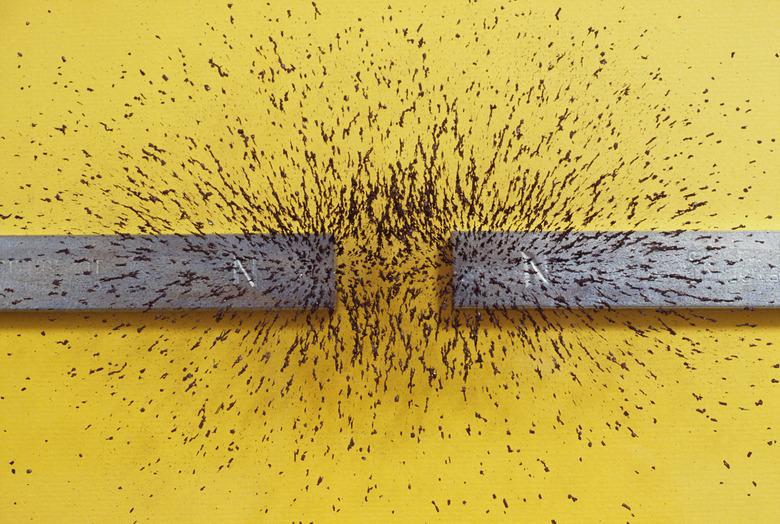Elementary Science Experiments For Magnets
Science education for kids should focus on achieving proficiency in core subjects such as earth science, chemistry and physics. Massachusetts has been ranked No. 1 for science education in the U.S. by the online publication "Live Science." Giving students the opportunity to experiment in their own creative ways is critical to developing scientific minds. Elementary school students can actively experiment with magnets rather than passively listening to a lecture about their properties.
Prechool/Kindergarten to Second Grade: Earth and Space Science
Prechool/Kindergarten to Second Grade: Earth and Space Science
According to the Massachusetts "Earth and Space Science" requirements, or ESS, students should be introduced to minerals and examples of their properties. For example, have them observe the magnetic properties of magnetite and hematite, which are iron ore minerals. For an experiment, obtain some iron filings and a cow magnet. The magnetic field can be visualized when the iron filings are sprinkled around the cow magnet; you might consider conducting the entire experiment in a container of honey, syrup or another viscous material. This will give you a nice 3-D picture of the magnetic field because the iron filings will float in space.
Grade Three to Five: Magnetic Energy
Grade Three to Five: Magnetic Energy
Let your students experiment with ring magnets on a pencil in order to help them recognize that magnets have poles that repel and attract each other, as recommended in the Massachusetts State Standards for Chemistry and Physics. Ring magnets are common, inexpensive, and about the size of a lifesaver; they can easily be stacked on top of one another to demonstrate principles of attraction and repulsion. Explain that when the rings are aligned with opposite poles in contact, they will be attracted to each other. Conversely, when the same poles are in contact, the magnets will repel each other. These are fundamental properties of magnets; "opposites" attract and "like" repel. Expand on this activity by testing objects in the room to determine what materials are magnetic. For instance, paper clips are good to experiment with; first the magnet will attract the paper clip, but after staying in contact with each other for a few minutes, the clip will acquire its own magnetic pull, which can be demonstrated with other paper clips without the original magnet present.
Grades Three to Five: Electrical Energy
Grades Three to Five: Electrical Energy
Massachusetts' learning standard in "electrical energy" for grades 3-5 recommends teachers explain how electromagnets can be made, and give examples of how they can be used. Using a 9-volt battery, an insulated wire, and a large nail or screw driver, an electromagnet can be built by the students. This experiment also teaches students about the properties of electrical conductors and insulators, which happens to be another learning standard for this age level. Explain to the students that the wire is highly conductive, while the insulating material that it is wrapped in does not conduct electricity.
Advanced Content: Electromagnetism
Advanced Content: Electromagnetism
For the scientifically inclined, experiments in electromagnetism would introduce students to its most practical application. Explain to the students that this process is commonly used in sound production technology; microphones, for example, convert sound waves into electricity through the movement of a magnet through a coiled wire. Furthermore, the speaker regenerates the sound waves as the electrical signal is converted into air pressure waves by another magnet in the speaker system. Let the students use the microphone/speaker system after you have explained how it works and encourage questions.
Cite This Article
MLA
Larson, Matthew. "Elementary Science Experiments For Magnets" sciencing.com, https://www.sciencing.com/elementary-science-experiments-magnets-8720875/. 24 April 2017.
APA
Larson, Matthew. (2017, April 24). Elementary Science Experiments For Magnets. sciencing.com. Retrieved from https://www.sciencing.com/elementary-science-experiments-magnets-8720875/
Chicago
Larson, Matthew. Elementary Science Experiments For Magnets last modified August 30, 2022. https://www.sciencing.com/elementary-science-experiments-magnets-8720875/
